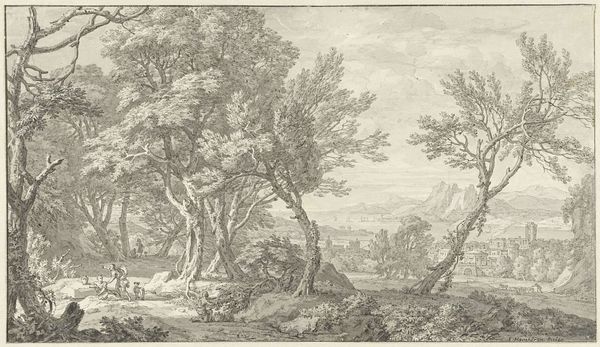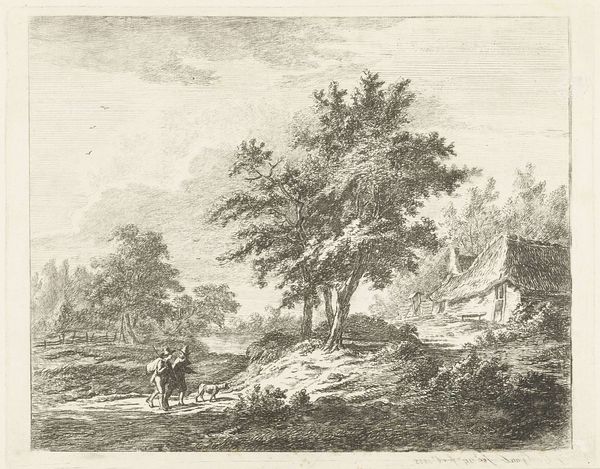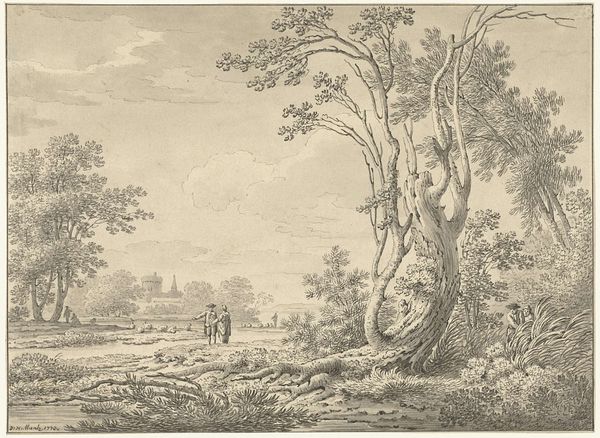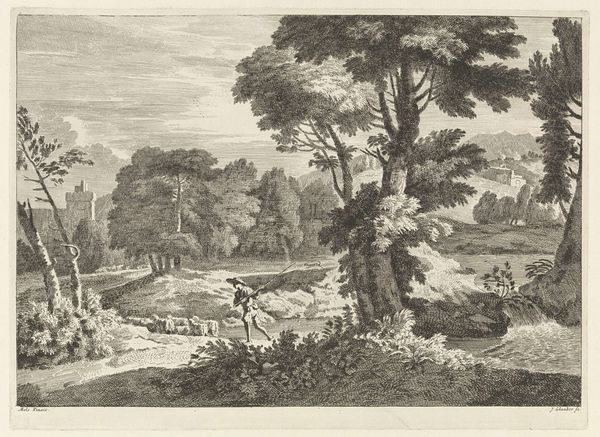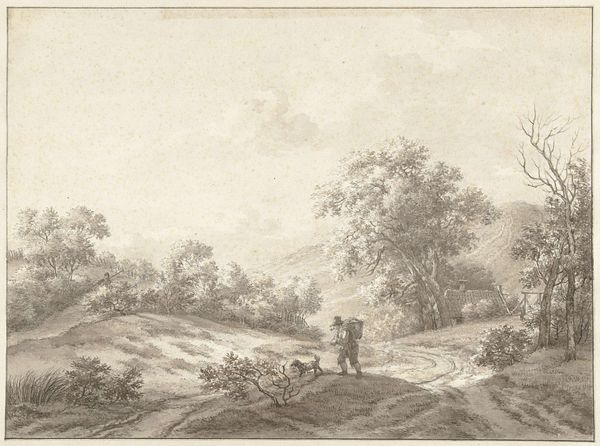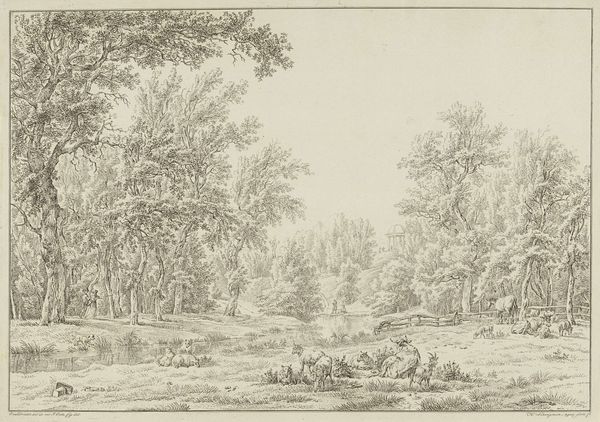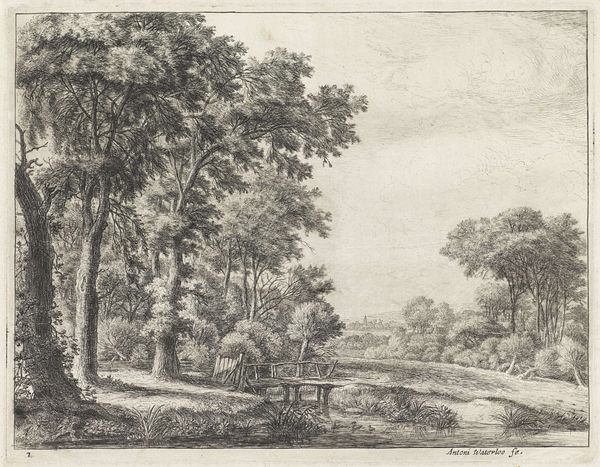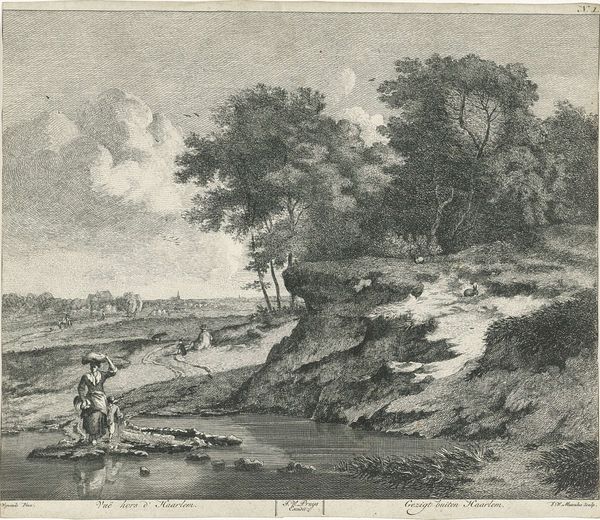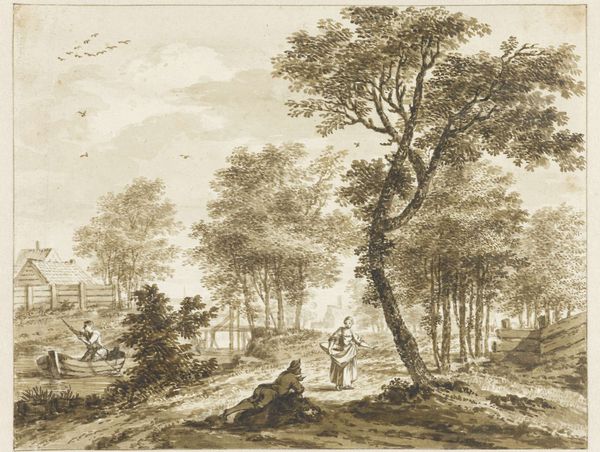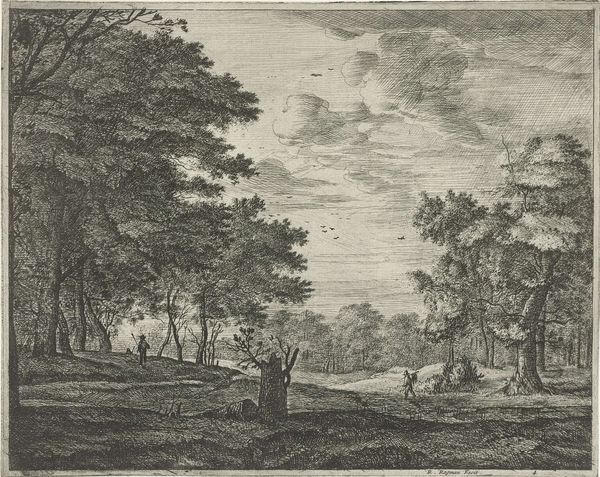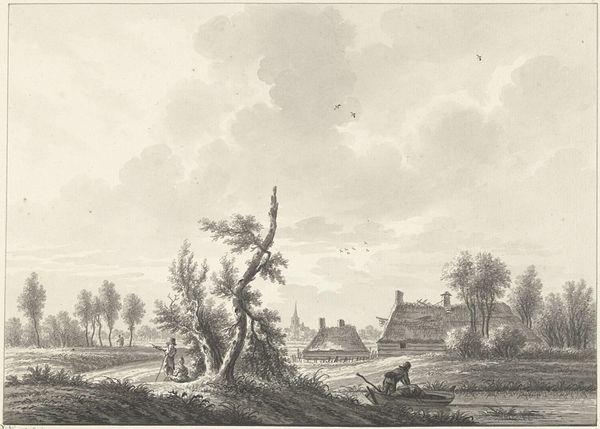
Dimensions: height 289 mm, width 392 mm, height 239 mm, width 322 mm
Copyright: Rijks Museum: Open Domain
Nicolaas Wicart created this drawing of the village Driebergen with pen in gray ink and brush in gray and brown ink. The structure of the drawing centers around the strategic placement of elements that guide the viewer's gaze. Notice how the house, figures and trees create a rhythmic pattern across the landscape. The subtle tonal gradations lend a sense of depth. Wicart skillfully manipulates light and shadow to define the forms within the pastoral scene. This approach reflects a broader artistic interest in the interplay between naturalism and idealized representation. The semiotic system operates through a visual language where each element communicates specific cultural meanings. The landscape itself becomes a signifier of idealized rural life. The scene invites the viewer to reflect on the relationship between nature, culture, and representation. The drawing destabilizes fixed notions of landscape art, inviting us to interpret how the aesthetic representation of nature interacts with cultural values.
Comments
No comments
Be the first to comment and join the conversation on the ultimate creative platform.
